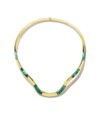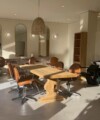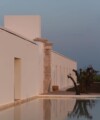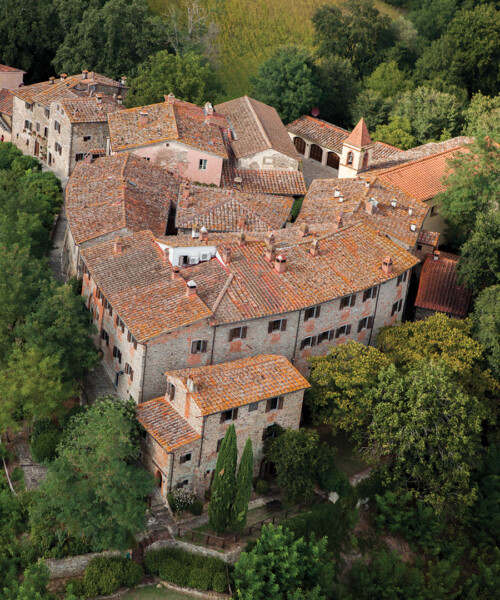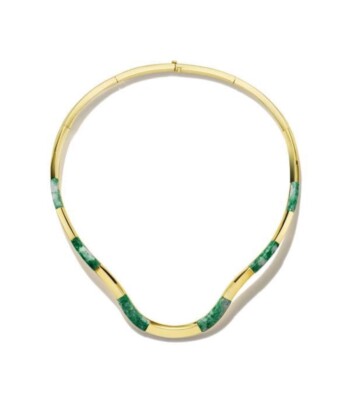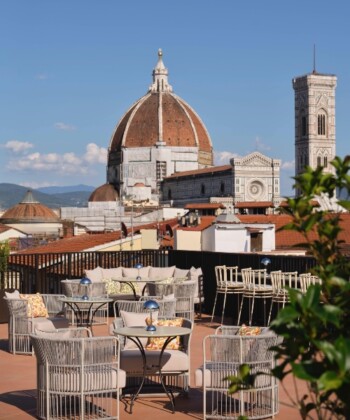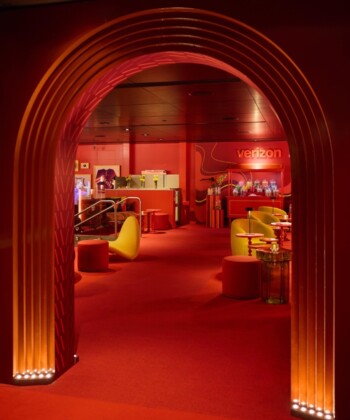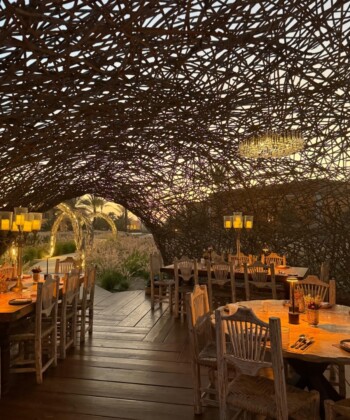When Ferruccio Ferragamo bought Il Borro in 1993, he wasn’t planning to produce wine. He had bought this sprawling estate within Tuscany’s Upper Arno Valley with the intention of restoring its medieval village and turning the estate into a luxury hotel.
But in 1994, Ferruccio and his son, Salvatore, did in fact begin planting vines. This was the start of something big for the Ferruccio Ferragamo family.

Entrance to Il Borro Relais & Chateaux.
Now, with the recent acquisition of the neighboring estate, Il Borro spans 1,100 hectares of vineyards, forest and agricultural land in a natural basin bordered by the Pratomagno massif and Chianti hills. A fully restored medieval village, villas and renovated farmhouses sit amid the gardens and vines and the hotel is a part of the prestigious Relais & Chateaux collection.
Salvatore runs the estate as CEO and Ferruccio’s daughter, Vittoria, looks after the organic vegetable gardens as well as taking on the role of special projects manager. And while the family name adds a certain flair and touch of glamour, the estate still breathes Tuscan authenticity, from the sensitive restoration of its ancient properties to the products cultivated on the land and celebration of food and wine.

Salvatore Ferragamo in the Il Borro Cellars.
This Tuscan identity is seen at its most vibrant during the annual grape harvest. Il Borro established this celebration as a way to reward the vineyard’s workers. But this annual revelry, following grape picking with a feast amid the vines, gradually evolved over the years, becoming an annual event for friends of the Ferragamo family, people from the local area, and guests who are lucky enough to be staying at the hotel.
It was at this year’s grape harvest that Ferruccio announced the latest developments to the Il Borro estate. As well as revealing the acquisition of the neighboring estate, Vitereta, the event marked the recent launch of Le Aie del Borro, a collection of restored farmhouses home to 20 luxury suites, a swimming pool, and bar.

Il Borro Toscana Villa Marnia.
With this additional accommodation, Il Borro now holds 58 suites between the new Aie del Borro farmhouses—Il Forte, La Posta, and La Fonte—Dimora Il Borro villa, houses of the medieval village, and four-bedroom Villa Casetta. Each area comes with an infinity pool and it’s all joined by two restaurants—Osteria del Borro and Il Borro Tuscan Bistro—overseen by executive chef Andrea Campani, La Corte Spa, the Wine & Art Gallery, centuries old wine cellar, stables, and golf course. Local artisans, including a goldsmith and shoemaker, use houses of the village as boutiques and workshops.
The estate’s vineyards are perhaps Il Borro’s greatest pride. 12 organic fine wines are now produced from the land’s sangiovese, syrah, merlot, and sabernet sauvignon grapes, including the Bolle di Borro sparkling rosé produced through the classic aging on the lees and riddling method, and the Petruna Anfora IGT Toscana Sangiovese, which is aged in clay pots.

Exterior and gardens.
The fields of vines at the source of these wines lie alongside 40 hectares of olive trees, 180 hectares of arable and foraging land, and two hectares of organic vegetable gardens with 30 beehives. Sustainability is key to the estate. Il Borro’s vineyards and gardens are certified fully organic and the estate has a zero carbon footprint, producing more energy by solar power than it can use.
To experience the estate fully, you can sign up for one of the wine tours—choose between wine and art tours, a vineyard tour with a picnic, and wine tasting with food pairing—and take a Tuscan cooking class before tucking into seasonal dishes, like hare-stuffed pappardella and cannolo filled with papa al pomodoro, using produce from the estate.

Innovative culinary dishes at Il Borro Tuscan Bistro.
You can see the craftsmen at work in the village’s boutiques, follow trails on foot, bicycle or horseback, and take to the tennis courts or golf course. And make sure you find time to stop by the Wine & Art Gallery to see artworks by icons such as Mantegna, Rembrandt, Chagall, Picasso, and Warhol, and wander through its latest long-running exhibition, “Bacchus and Venus: the role of women in wine history.”
For a different perspective of the estate’s lush surroundings, soar above the hills in a scenic helicopter or hot air balloon flight, or drive along the winding Tuscan roads in a Ferrari.

Il Borro Cellars where the first Chianti wine was produced.
Now that we’ve reached the winter months, we may have left grape harvest and the time for picking olives behind, but this signifies the start of the truffle-hunting season. By visiting in December, you can venture into the countryside in the company of expert truffle hunters and specially trained dogs. And what better way to then celebrate your day’s finds than with truffle-infused dishes back at the estate. You’re sure to come away with a taste for Tuscan life.


